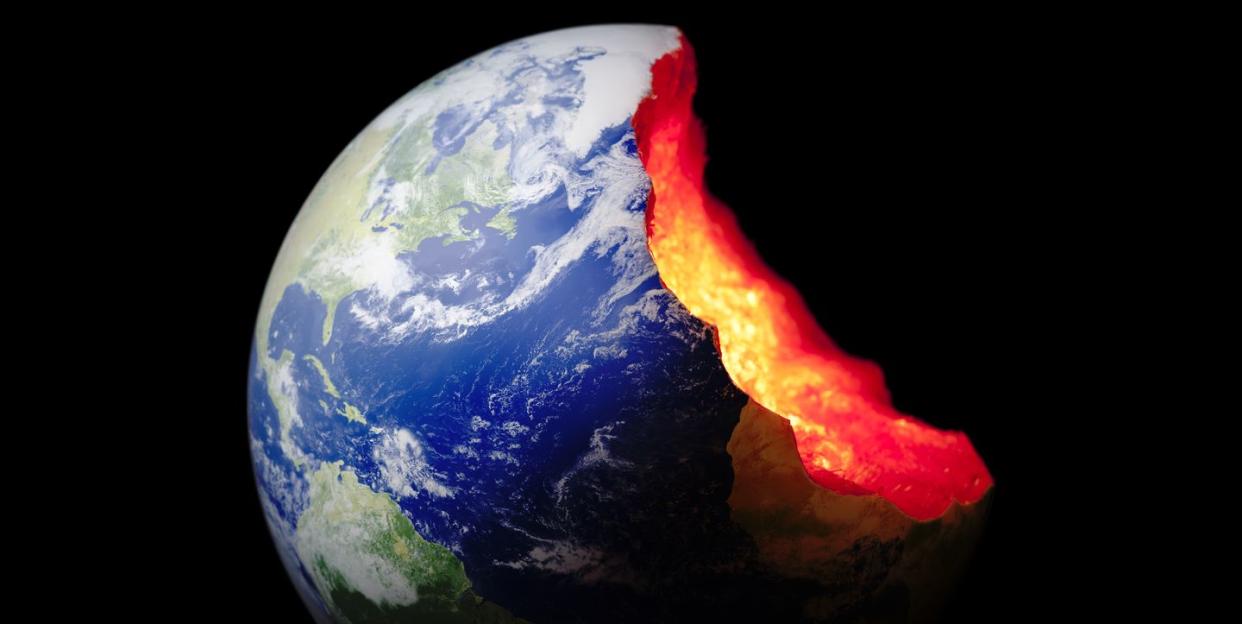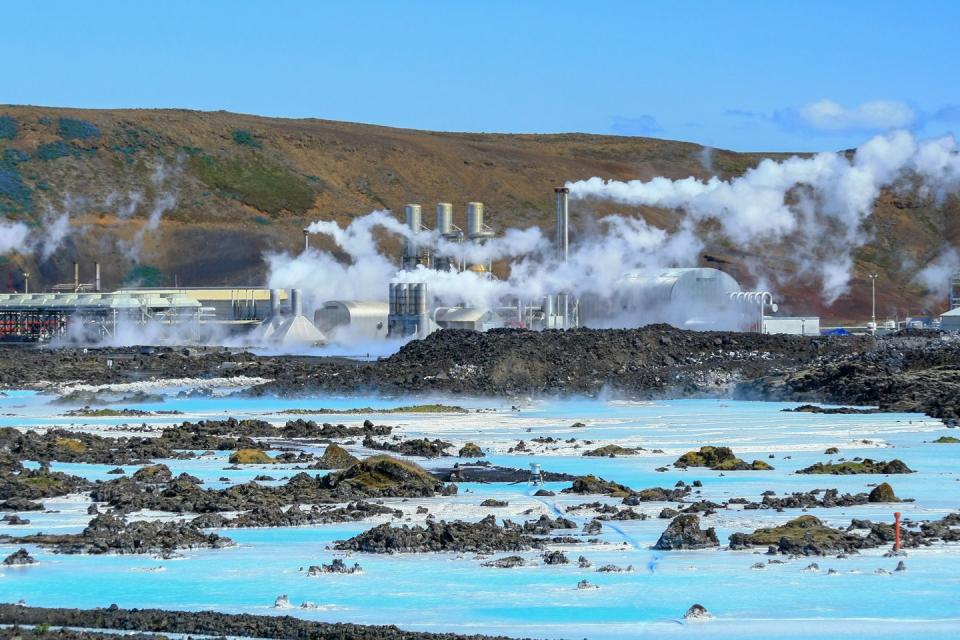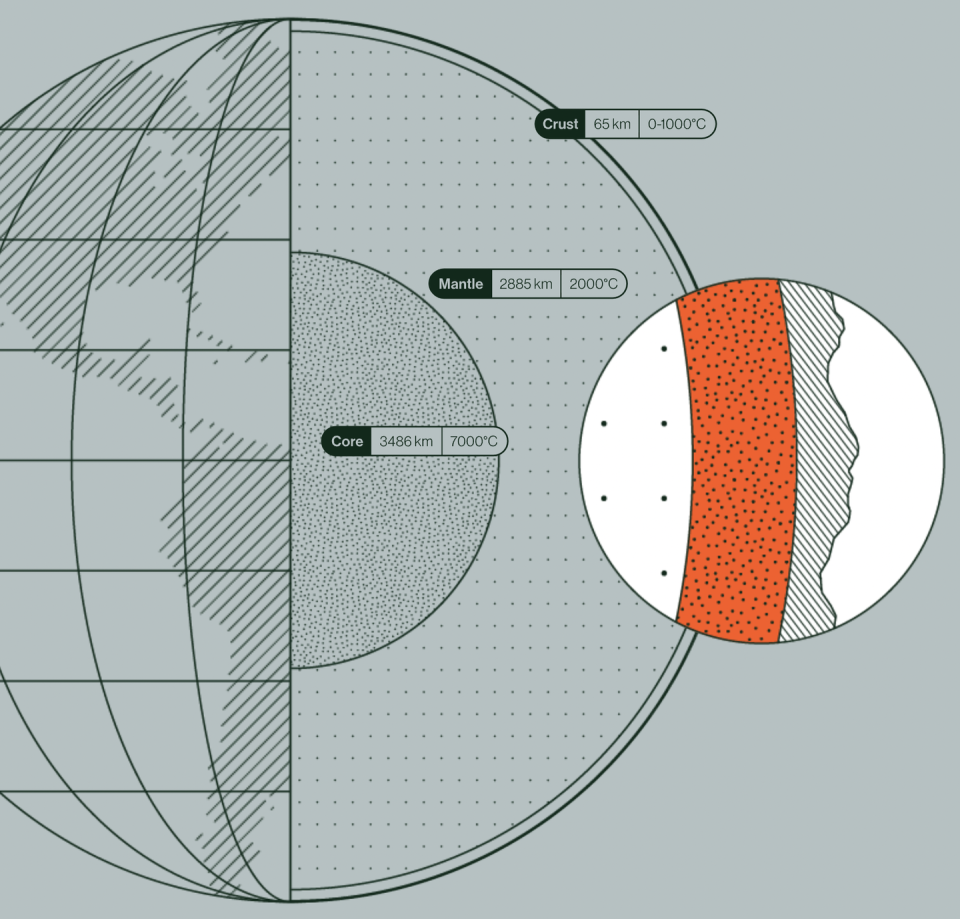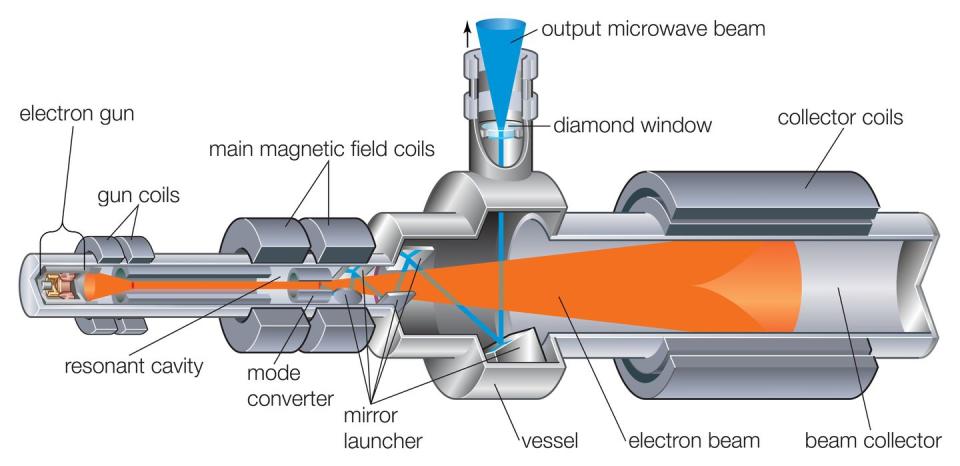How Drilling the World’s Deepest Holes Could Give Us Unlimited Green Energy

Tapping into the energy content of heat stored underground would meet the world’s energy needs.
To do so, the engineering would focus on millimeter waves that vaporize rocks to drill deeper than ever before.
An MIT spinoff hopes to scale the technology within a few years.
The vast geothermal energy locked below Earth’s surface has scientists drooling, because it has the potential to provide clean energy to the entire world. To tap into this natural power, engineers must devise a new strategy for drilling a dozen miles into Earth, deep into rock. An MIT spinoff company believes it has the answer: millimeter wave drilling.
⚡️ Don’t miss any of our turbocharged energy stories—join Pop Mech Pro.
“The total energy content of the heat stored underground exceeds our annual energy demand as a planet by a factor of a billion,” Matt Houde, co-founder of Quaise Energy, says in a news release. “So, tapping into a fraction of that is more than enough to meet our energy needs for the foreseeable future.”
It’s just the tapping that’s an issue.
Using research from Paul Woskov of MIT’s Plasma Science and Fusion Center, Quaise Energy believes it can vaporize enough rock to create the world’s deepest holes and harvest geothermal energy at scale to satisfy human energy consumption without the need for fossil fuels.
What Is Geothermal Energy?

Simply put, geothermal energy is heat contained deep within Earth. According to the U.S. Energy Information Administration, that heat is a result of radioactive particles like uranium, thorium, and potassium in Earth’s core slowly decaying. It can get quite hot here—like surface of the sun hot at 10,800 degrees Fahrenheit.
To harness this geothermal energy, countries like Iceland convert it to electricity through steam. As water is heated in geothermal reservoirs or aquifers in Earth’s curst, steam is created, which then turns turbines that activate a generator, ultimately spitting out electricity. When the steam becomes water again, it’s returned to the ground so it can go through the cycle all over again.
While this is a nearly limitless form of sustainable energy production, it’s currently being underutilized. According to the International Energy Agency, geothermal electricity generation grew only about 2 percent in 2020 with an added 200 megawatts of capacity, a marked fall from the growth seen in the previous five years. A typical coal plant, mind you, has about 600 MW of capacity, according to the Union of Concerned Scientists.
To reach net-zero emissions by 2030, global geothermal energy production needs to increase by 13 percent each year between 2021-2030, or about 3.6 gigawatts of capacity. For that to happen, we need better access to this ultra-hot water from Earth’s core. That’s where millimeter wave drilling comes in.
Drilling Deeper Into Earth
Currently, the world’s deepest drilled hole is the Kola Superdeep Borehole in Russia near Norway. A project of the Soviet Union—and the result of a lesser-known scientific race with the U.S.—it was an attempt to drill as deeply as possible into Earth’s crust, which is on average about 30 kilometers (18.6 miles) thick beneath continents, according to the U.S. Geological Survey. But this hole reaches just 7.6 miles into the crust and took 20 years to complete because conventional equipment, such as mechanical drills, can’t handle the conditions at those depths.
Quaise technology, designed to blast rock with millimeter waves, might be a solution. By replacing conventional drill bits with millimeter wave energy, powered by a gyrotron machine, it’s possible to melt and then vaporize the rock to create many of these deep holes. It took MIT over 15 years to develop the general technique in a lab, eventually demonstrating the millimeter waves could drill holes in basalt. Quaise says its technology will allow it to reach 20 kilometers (12.4 miles) into the ground, where temperatures reach over 900 degrees Fahrenheit.

The plan is to usher in a hybrid design, first using conventional rotary drilling technology developed by the oil and gas industries to cut through Earth’s surface layers. Then, once crews reach the basement rock, they switch over to high-power millimeter waves, which are “ideal for the hard, hot, crystalline rock deep down that conventional drilling struggles with,” Houde says.
Quaise says it will have its first full-scale hybrid drilling rig up and running by 2024. By 2026, the company says its first geothermal system—rated to 100 megawatts of thermal energy—will be operating from a handful of wells. By 2028, it projects it can start replacing fossil fuel-powered energy plants with geothermal plants.
“At these high temperatures we’re accessing, we’re producing steam very close to, if not exceeding, the temperature that today’s coal and gas-fired power plants operate at,” Houde says. “So, we can go to existing power plants and say, ‘We can replace 95 to 100 percent of your coal use by developing a geothermal field and producing steam from the Earth, at the same temperature you’re burning coal to run your turbine, directly replacing carbon emissions.’”
From Fusion to Field Work

This isn’t a done deal. Quaise says it needs to better understand rock properties at great depth and advance the supply chain for gyrotrons, the linear-beam vacuum tubes that produce the millimeter waves. Currently, the equipment in question is optimized for specialized one-off fusion research projects, but the technology must be produced in quantity and with a robust design suitable for a field environment.
Then comes some additional engineering challenges, such as the proper removal technique for the ash created during the borehole drilling, and the need to keep the bored holes stable and open once completed.
“This will happen quickly once we solve the immediate engineering problems of transmitting a clean beam and having it operate at a high energy density without breakdown,” Woskov says in the news release. “It’ll go fast because the underlying technology, gyrotrons, are commercially available.”
A gyrotron features a powerful beam source, like lasers, but with a different frequency range. “I thought,” says Woskov, “why not direct these high-power beams, instead of into fusion plasma, down into rock and vaporize the hole?”
With geothermal energy sources plateauing across the world because conventional drilling methods proved impractical to handle the hotter and harder crusts much deeper than the shallow depths of 400 feet, the United States Department of Energy has offered a grant to Quaise to increase the company’s experiments with a larger gyrotron to continue improving the vaporizing abilities. Work also continues to grow the power of the drill.
“It’s really engineering challenges we have to answer, which doesn’t mean they’re easy to solve, but we’re not working against the laws of physics, to which there is no answer. It’s more a matter of overcoming some of the most technical and cost considerations to making this work at a large scale,” Houde says.
Courtney Linder contributed to this report.
You Might Also Like

 Yahoo Movies
Yahoo Movies 
